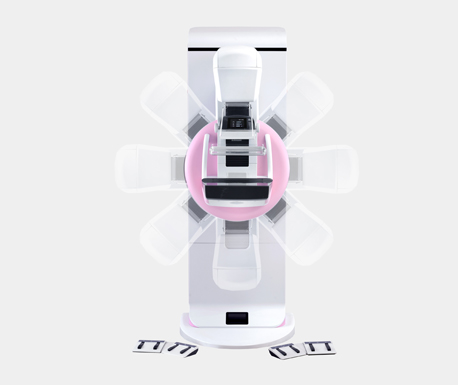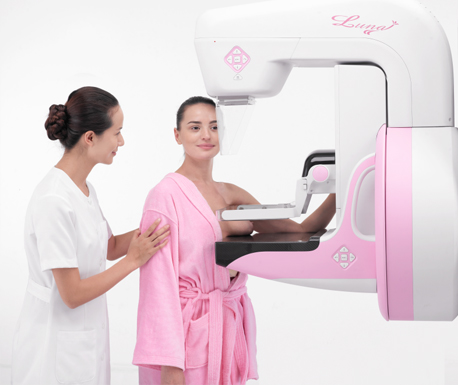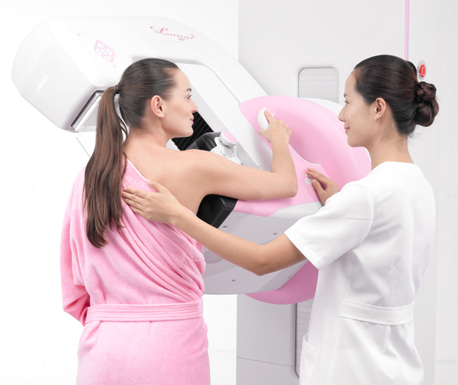
Innovative isocenter rotation technology: In case the imaging position is changed, the center of the detector automatically maintains the same height without the need to adjust the height of the examination arm, making it easier to operate the device and improve patient comfort.
Unique C-arm balance rotation technology: The C-arm can maintain rotation balance at any angle and any position, preventing vibration and reducing scanning errors. A precision microcontroller motion control system is adopted that can perfectly meet clinical positioning requirements.

Intelligent flexible compression technology: The compression plate automatically adjusts its speed according to the breast contour and pressure, ensuring there is uniform compression force.
Quick release technology: An optimal pressure value is selected based on different breast thickness and density, and the compression stops at the optimal pressure point. The pressure is automatically released at the end of exposure, which ensures the patient suffers minimal discomfort.
With the press of a button, the system can check the processes based on the preset tasks and automatically complete all scanning steps. One-key exposure is adopted to optimize the workflow and enhance efficiency. One-key power-on/off is adopted to streamline the traditional power on/off procedure with a brand-new power distribution unit (PDU). One-key positioning is adopted to enable easy positioning, with near-table multi-functional motion keys.

Automatic Mo/Rh filter switching technology: The optimal anode/filter combination is automatically selected based on different types of tissue and density, to reduce the amount of radiation.
SMART AEC automatic exposure technology: Shorter exposure time, higher image contrast and greater sharpness.
24 × 30 cm large-size flat panel detector: Perfectly meets the need to scan different body positions, with smaller imaging pixel size, higher spatial resolution and lower signal-to-noise ratio.
